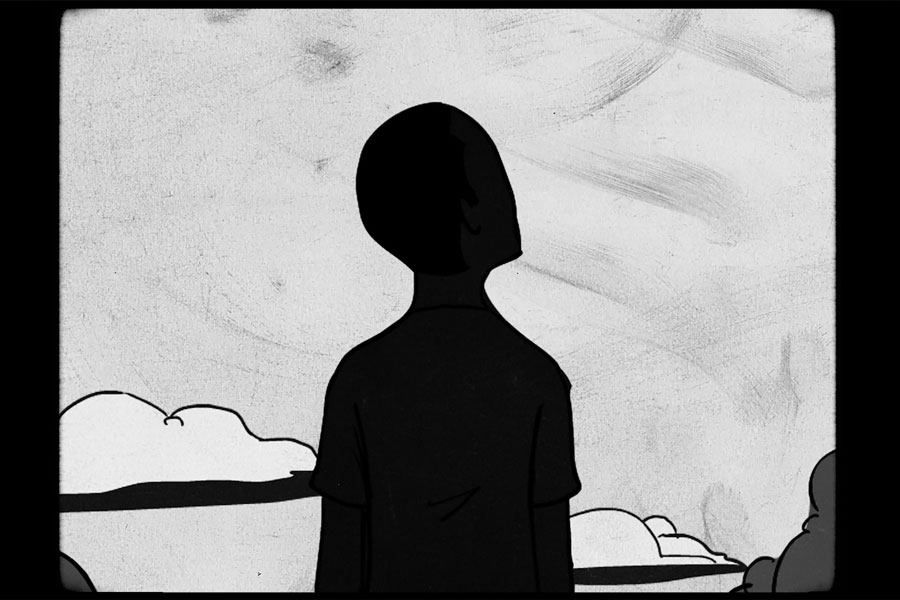Northwestern graduates’ documentary “Stay Close” shortlisted for an Oscar
A still from “Stay Close.” Directed by Luther Clement-Lam and Shuhan Fan, the film was shortlisted for Best Documentary Short at the 2020 Oscars.
January 8, 2020
The day after Luther Clement-Lam (Communication MFA ‘17) graduated high school, he moved to New York City and began fencing lessons at the Peter Westbrook Foundation. There, he trained to join the USA 2012 Olympic fencing team, only to ultimately not make the cut. Looking to leave the sport behind and find something else, Clement-Lam discovered a new passion in the form of filmmaking, eventually attending Northwestern for grad school.
Clement-Lam began re-exploring his love of the sport through “Stay Close,” a short documentary following the life and fencing career of Keeth Smart, silver-medal winner at the 2008 Olympics and Clement-Lam’s training partner when he trained at the Foundation. Clement-Lam co-directed with fellow alum Shuhan Fan (Communication MFA ‘16), and the film was produced by Nevo Shinaar (Communication MFA ‘17) and co-produced by Ashley Brandon (Communication MFA ‘17).
The film was distributed by the New York Times for their Op-Doc series, and released online Oct. 14. In addition, PBS aired the short on TV as part of the channel’s “POV Shorts” series. On Dec. 17, “Stay Close” was announced as one of 10 films on the shortlist for the Best Documentary Short category at the 2020 Academy Awards.
“We were shocked when we heard the news,” Clement-Lam said. “We never expected anything like this, we never had any sort of expectations for the film. We just wanted to make it to honor the trust Keeth and his family placed in us. We just wanted somebody else to see it, and this far and away exceeded anything we could hope for.”
The project began while the directors were still in their MFA program, when Clement-Lam interviewed several members of the Peter Westbrook Foundation and asked Fan which member would make the most interesting documentary subject. Fan choose Smart because his story had the clearest narrative arc.
As a child, Smart was a subpar fencer who was only offered a spot at the Foundation because his younger sister was extremely talented, and his parents insisted both received lessons. Smart trained relentlessly, eventually becoming one of the best male fencers in the world, only to battle tragedies from the death of his father, his mother’s cancer diagnosis, and his own struggle with leukemia. Smart ultimately triumphed at the 2008 Beijing Olympics, winning the silver medal.
The crew applied for a grant from Tribeca Film Institute and ESPN, which was aimed at supporting short, sports-related documentaries, and began traveling to New York to interview Smart, his sister Erinn and other members of the Peter Westbrook Foundation. In addition to recording voice-overs from the interviews and shooting some original footage, the directors also received hours of home movie tapes from the Smarts. The directors ended up building the structure and the tone of the short around the archival tapes.
“Everything was sort of to be informed by the nonprofessional but very intimate hand of a parent recording their children on camcorder,” Clement-Lam said.
In addition to the archival footage, the film also includes several scenes animated in a contrasting black and white 2D style. According to Clement-Lam, the animation is purposefully rough, with visible motion lines, to complement the intimacy of the home movies. The animated scenes were storyboarded by Clement-Lam and Fan, who then had animator Aaron Brewer finish these segments.
Fan said the choice to use animation began as a mostly practical one, because the project didn’t have the budget to afford the licensing costs of footage from the 2008 Olympics. However, they wanted to make the animated scenes fit naturally with the film, and found they opened many creative opportunities for them as directors. The short uses animation to depict more surreal moments that captured the mood and tone of the story, as well as moments they didn’t have footage for like Smart’s father’s death.
Fan said they felt that the aesthetic and the presentation of these animated scenes was also true to who Smart was as a person based on their interviews with him.
“Based on our interview, we felt very comfortable presenting him that way. We felt it was an aesthetic that he would like,” Fan said. “There’s something in his voice, it gives us a feeling that we should make an animated film about this person. He went through a lot of things that are hard to take, but he still has that positive energy in his voice, and it felt like something we wanted to present with animation.”
Shinaar said the film connects with audiences because even though the circumstances of Smart’s story might be unique, it’s a story rooted in universal and relatable themes of perseverance, loss and especially family. A large part of the film is Smart’s relationship with his parents and sister, and the film ends with footage of him and his daughter. Through the Peter Westbrook Foundation, the film also explores how a community working together for a common goal can become a family of sorts, which Shinaar said resonated with the members of the crew, as Northwestern’s MFA program also has a similar tight-knit, collaborative community.
“Yes, it’s a sports story, but it’s really about family,” Shinaar said. “And we all know how that works, and it resonates emotionally for all of us.”
Email: [email protected]
Twitter: @wilsonchapman6


